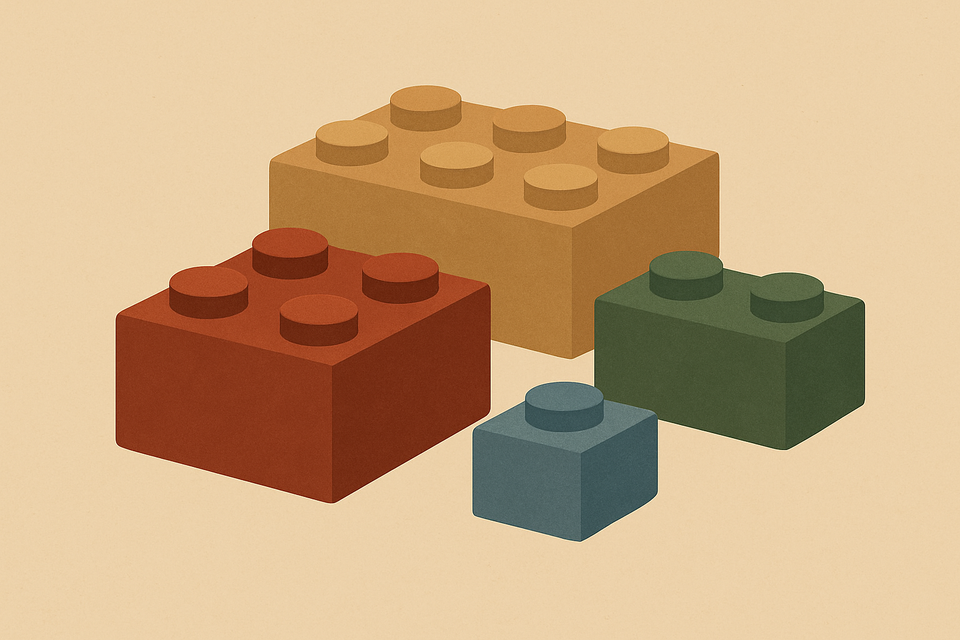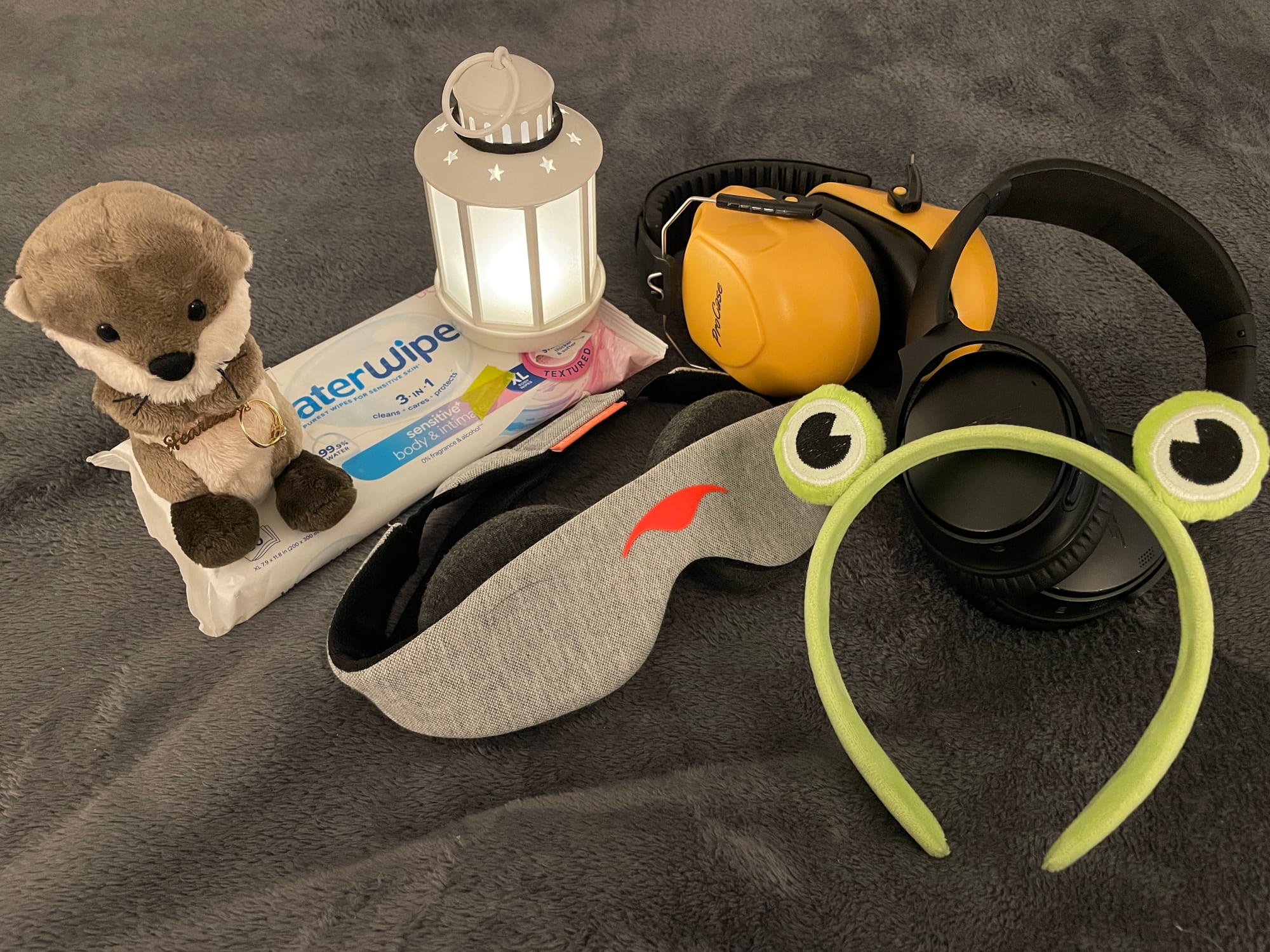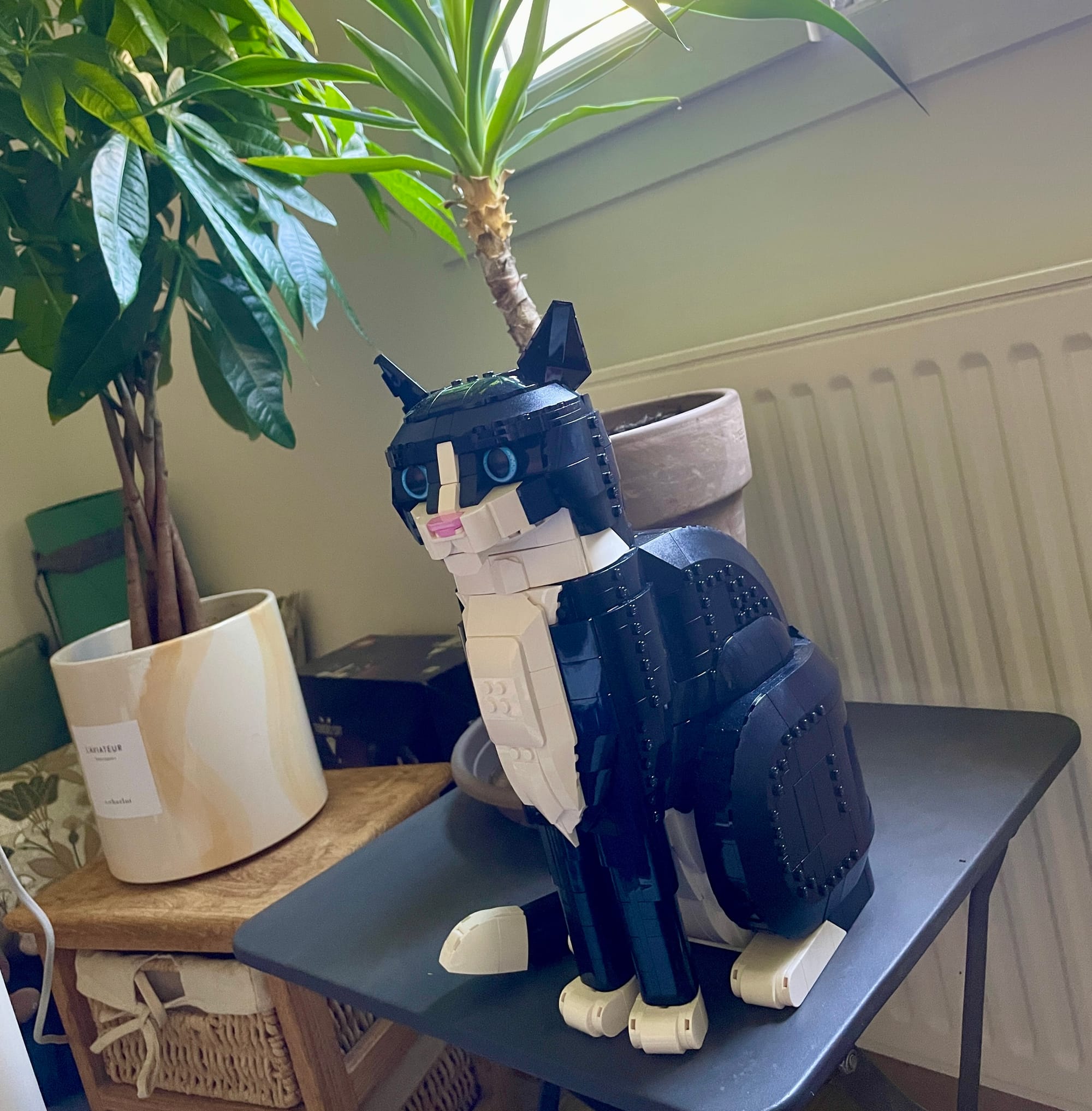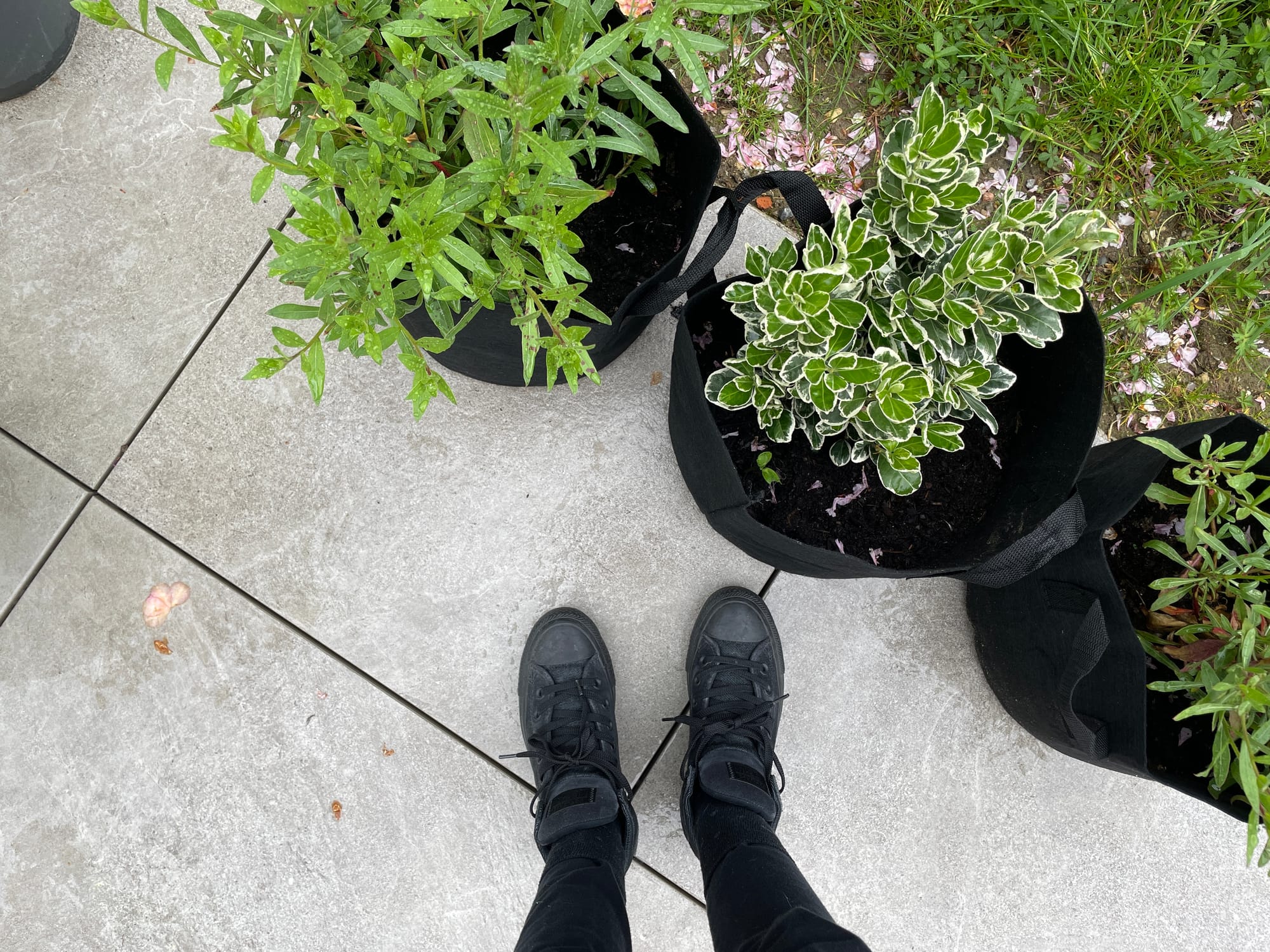Tools for each stage of severity

Note: This post will make more sense if you read about The Nervous System States first.
Each stage of severity needs its own strategy. Depending on your current capacity, some practices may not be available to you just yet, and that's absolutely fine. There's always something you can do to help your nervous system.
In this post will give you some examples about what I did for each of the stages with the capacity I had.
Before we start, I just want you to remember this: You don’t need to know what the whole path will look like from the start. Trust your body. Each new step actually comes when it's ready.
Very severe
In the very severe stage, finding comfort is the intervention.
What it looked like for me
- Bedbound, laying flat 23.5 hours a day, only going to the bathroom.
- Couldn't watch or listen to content for more than a minute.
- 24/7 symptoms, mostly resting without stimulation.
- Nervous system stuck in deep 🪫 Immobilization / shutdown.
What helped
Thoughts & emotions
- Living one breath at a time. The only thing that matters is this next breath.
- Letting go. Which doesn't mean giving up, but leaning into what is there.
- Believing that this was not forever.
- Allowing myself to feel the sadness, grief, or fear for a few minutes, without dwelling for too long.
Practices
- Breathing while smiling (even a fake smile signals safety to your brain).
- Counting my breaths (inhale, 1... exhale, 2...).
- Focusing on sensations in tiny parts of my body, that felt neutral or good (the tip of my nose, my toes, my butt cheeks...).
- One tiny action to feel just 1% more comfortable or safer: refreshing my body with a wet wipe, eating a snack, or a short chat with my partner.
Practical tips
- Protein drinks & bars for days where I wasn't able to eat normal food
- Noise cancelling headphones & eye mask to rest my senses
- Body wet wipes
- A remote controlled fan
- Cutting my hair short
- Having objects that made me smile (for me, plushies, a small lantern for difficult nights, and a great frog headband 💫)

Severe
The severe stage is about gently reinforcing your sense of safety so your nervous system can slowly come out of shutdown. While doing so, the goal is not to do more, but to stabilize and keep the energy cost as low as possible.
What it looked like for me
- Mostly bedbound. Short moments sitting in the living room or garden.
- Able to use my phone or talk to people in small sessions.
- Able to shower once a week.
- Permanent symptoms, lots of ups and downs, and still needing a lot of rest.
- Nervous system mostly in 🪫 Immobilization, with small moments in ⚠️ Fight-Flight.
What helped
Thoughts & emotions
- Reassuring self-talk on symptoms: those are just sensations, not threats.
- Letting go of the "fix it" mode
- Catching ruminations and anxious thoughts before they spiral, and gently redirecting my attention.
- Allowing my emotions and feeling them in my body.
- Never anticipating disaster when trying a little bit more activity, and only try things when feeling safe and regulated.
Practices
- Meditations like somatic tracking (guided practices I like: for bodily sensations, for emotions)
- Very gentle movement to help blood flow, like wrist and ankle rotations.
- Soothing touch like massaging my hands, stroking my arms and thighs.
- Light and enjoyable stimulation: For me it was watching nice stuff on my phone (like stand-up comedy, home renovation videos, and cat videos), listening to soft music and singing. Later on, I was able to build Lego for a few minutes at a time.
🖤 Here is an amazing selection of very short gentle meditations (between 1 and 5 min, mostly without background music), by Claudia Caracol.
Practical tips
- Taking easy showers
- Sitting directly on the floor or on a shower stool.
- Using a shower flower to spread the soap with less effort, and a soap that rinsed off very quickly to save energy.
- Having a bathrobe made it easier to lie back down immediately, without having to dry or dress up.
- Having an inflatable sink so my partner could occasionally wash my hair with me lying down.
- Using dictation on my phone to write messages without looking at the screen, so I could stay connected without sensory strain.
- Adding plants in my room so I could connect to nature without going outside.

Moderate to mild
The moderate to mild stage is about expanding activity very gently, while keeping your nervous system regulated and anchored in safety. The symptoms are still there, but they no longer mean danger. They fade gradually as your life expands again.
What it looked like for me
- Housebound at first, then my "safe territory" slowly expanded outside.
- Symptoms are much less intense, but not completely gone. Setbacks still happen, but are less intense.
- More trust and serenity regarding activity.
- Nervous system oscillates between 🌱 Safety and ⚠️ Fight-Flight, with significantly less moments in 🪫 Immobilization.
What helped
Thoughts & emotions
- Relying solely on my body's intuition to expand activity. I stopped listening to the voice of frustration, saying "I should be able to do that now", and started listening to the voice of confidence and curiosity, saying "Today, I feel that I can do that". All my successful expansions started like this.
- Setting clear boundaries about my needs with my loved ones. These conversations are never easy, but they create a safer foundation for connection.
- Working on shifting my old survival strategies and patterns, like high-achieving, perfectionism, and self criticism.
- Going back to therapy, but only once I felt stable enough! CBT, ACT or EMDR therapy can help, especially to process the trauma of the illness itself.
Practices
- Gentle movement:
- Walking outside (low and slow)
- Gentle yoga & stretching on the bed (a practice from Suzy Bolt that I love)
- Later on, electric bicycle
- Mini-meditations (body check-ins) if symptoms show up.
- Human connection: Reconnecting to people, even if it was mostly online, was very healing.
- Never rushing things, but exploring safely. If I don't feel confident about something and I have a choice, I don't do it. But I never feel 100% confident either. I decided to settle for: if I feel 80% confident and in a regulated state, the activity is worth a try!
Practical tips
- Finding easy meals that I was able to cook myself, to regain some independence and confidence (frozen food helped a lot!)
- Opening windows every day to air the house and have clean air.
- Changing things in your bedroom, especially if you were bedbound for a while: redecorate, move furniture, change your bedding... It's a smart way to signal to your system that difficult times are now behind you.

Finding joy
At any stage of recovery, finding activities that brought me joy was my main focus. Tiny things at first, then reconnecting to my passions, slowly. Joy is the nervous system's most powerful medicine. So much more than any "healing practice" that you try to force onto your body.
About tracking
I didn't find any form of tracking helpful, at any stage.
By "tracking", I mean: monitoring heart rate, HRV, blood pressure, step count, time spend on an activity, and using any device that gives tracking data. It only reinforced my fear loops and got me stuck.
If you feel that tracking is helpful for you: please, keep doing it! But remind yourself that it can get you stuck in hypervigilance and "alert mode" at some point.
Setbacks
Setbacks can bring you back to a previous level of capacity and make you feel severe again. But it is very important to remind yourself that it is only temporary.
During setbacks, just go back to what helped you the most before, with compassion. Gentle practices if you can, letting go, and trusting the process.
Conclusion
I spent approximately a year in a severe bedbound state, and a few months in a very severe state. I won’t sugarcoat it, those months were about survival, and they were incredibly hard. I described in more detail what my days were like in this post. If you are there right now, I see you. Hang in there, this is not forever.
If you learned about a practice that is too difficult at the moment, or didn't seem to work yet, it's okay. It may become useful later (or not!).
Each stage of recovery may require a slightly different approach, but you don’t have to figure everything out from the start. Your next step will become clear when your system is ready for it. You are exactly where you’re meant to be. Trust yourself, you’ve got this.
